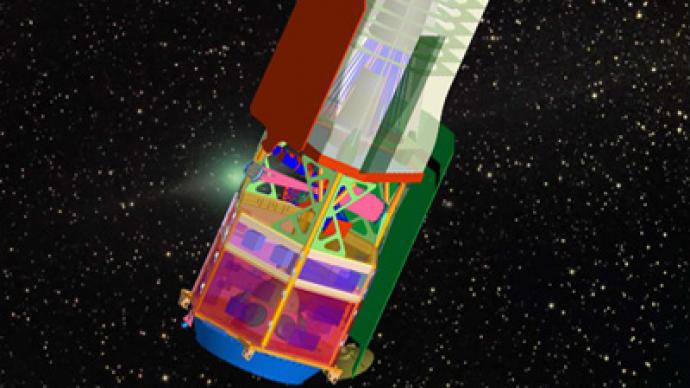NASA gets two spy telescopes they can’t launch

The agency responsible for maintaining the US government’s spy telescopes recently gave NASA an unexpected gift: two telescopes as powerful as the Hubble. So unexpected in fact, NASA has no idea how to put its new toys into orbit.
On Monday, NASA made a stunning announcement. In a fit of generosity, the National Reconnaissance Office, the secretive organization responsible for building and maintaining the US government’s spy satellite fleet, has given NASA a spectacular gift: two former spy telescopes, each potentially more powerful than NASA’s current eye in the sky Hubble, absolutely free. Why? Apparently, just because.The NRO made first contact with NASA in January of 2011. “I got a phone call [from NRO] saying, ‘we have some qualified space hardware that we need to dispose of or let someone else take advantage of,” NASA’s Deputy Director of Astrophysics Michael Moore told reporters in a conference call. “There were no strings attached, we didn’t physically move anything, we just swapped a piece of paper.”NASA jumped at the chance, not fully realizing the magnitude of what they were getting. Sitting in storage in Rochester NY were two spy telescopes the same size as Hubble, but with 7.9 foot mirrors, giving them 100 times as wide a view, complete with more space onboard to mount a wider array of analyzing equipment due to their compact design.“This is a total game changer,” David N. Spergel of Princeton University told the New York Times. Professor Spergel is co-chairman of the committee on astronomy and astrophysics for the National Academy of Sciences that works with NASA. But why would the NRO just give away two incredibly powerful spy satellites? “They no longer possessed intelligence collection uses,” Loretta DeSio, spokeswoman for the NRO, told The Washington Post. “The hardware is approximately the same size as the Hubble but uses newer, much lighter mirror and structure technology.” She also added, cryptically, “Some components were removed before the transfer.”When asked which components were removed, she said laconically “I can’t tell you that.”“This is not something we’re going to talk about,” she concluded. “We’re hoping this becomes a NASA story.”
In fact, even though they have been de-classified, NASA’s new acquisitions are still sensitive enough that neither agency would provide a photograph. At their presentation to scientists on Monday in Washington, an image of one of the telescopes was shown, but was so thoroughly edited in the interests of national security that the audience burst into laughter, The Washington Post reports.Indeed NASA has a lot to be happy about. Instead of gazing into the night sky with a field view relative to the size of a straw, they will now be gazing through a garden-hose. According to analysts, if pointed at the Earth (as originally intended), these telescopes could spot a dime on the Washington Monument from orbit. The telescopes were probably built in the late 1990’s and early 2000’s, so while ‘state-of-the-art’, they are still a reminder they are not ‘cutting-edge’ enough for the government’s spy purposes. NASA hopes these telescopes will be able to rejuvenate their study into ‘dark energy’; one of the mysteries of the universe that scientists say is causing it to expand. There is, however, one catch: how to get them into orbit? “NASA does not have in its current budget the funding necessary to develop a space telescope mission using these new telescopes,” NASA Astrophysics Director Paul Hertz said. “We don’t at this point in time anticipate ever being rich enough to use both of them, but it sure would be fun, wouldn’t it?” Hertz said.They’re “space qualified,” as NASA puts it, but they’re a long way from being functioning space telescopes. They have no instruments, no cameras, and will require a major refit before they can be launched. Furthermore NASA lacks funding for any such mission, along with the necessary office space and support staff. They will remain in storage as NASA dreams of what could be.However, the gift itself could save the agency as much as 250 million dollars by alleviating the need to build a new telescope once the Hubble retires in the near future. “The thing that takes the longest to build is the telescope…Instead of losing a terrific telescope, you now have two telescopes even better to replace it with,” Spergel said.But NASA is holding off on the celebrations until it sees one of its new telescopes in orbit. “We never pop champagne here,” John Grunsfeld, the agency’s Head of Science told The Washington Post. “Our budgets are too tight.”














